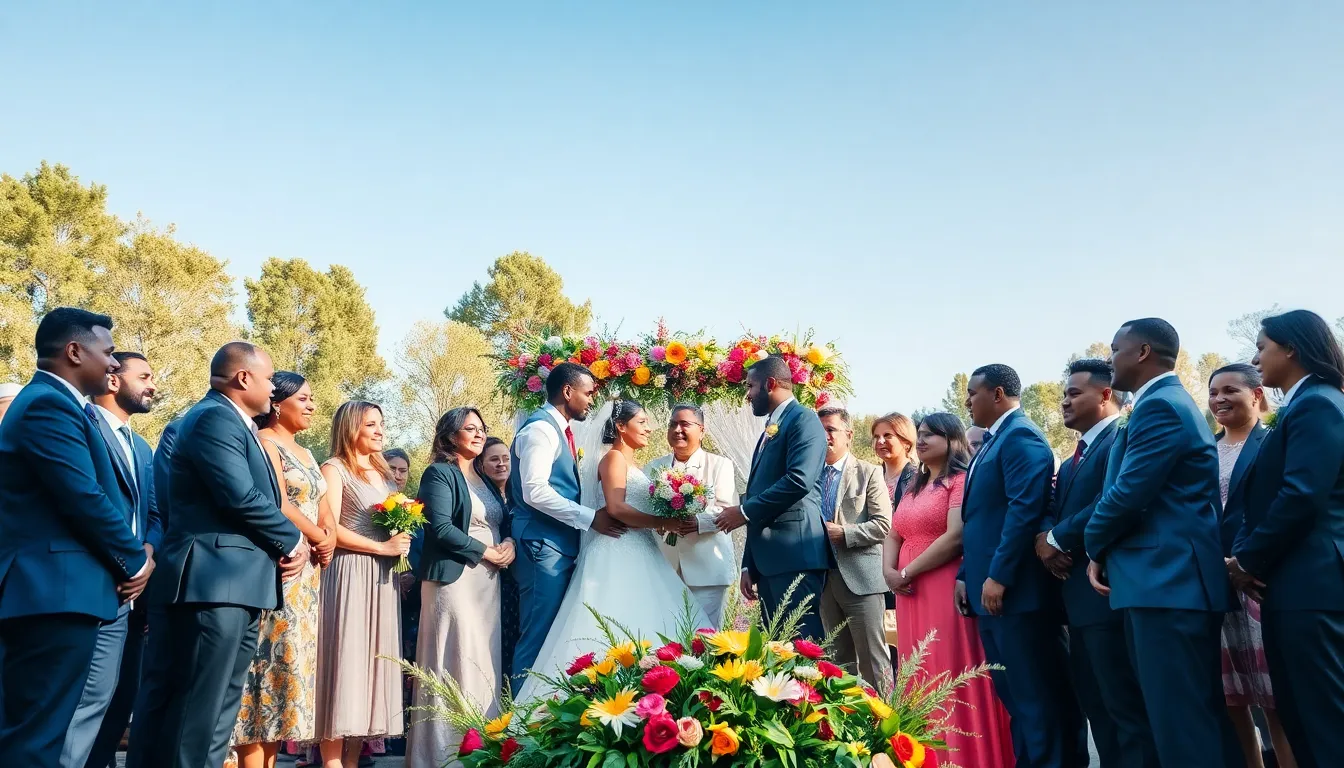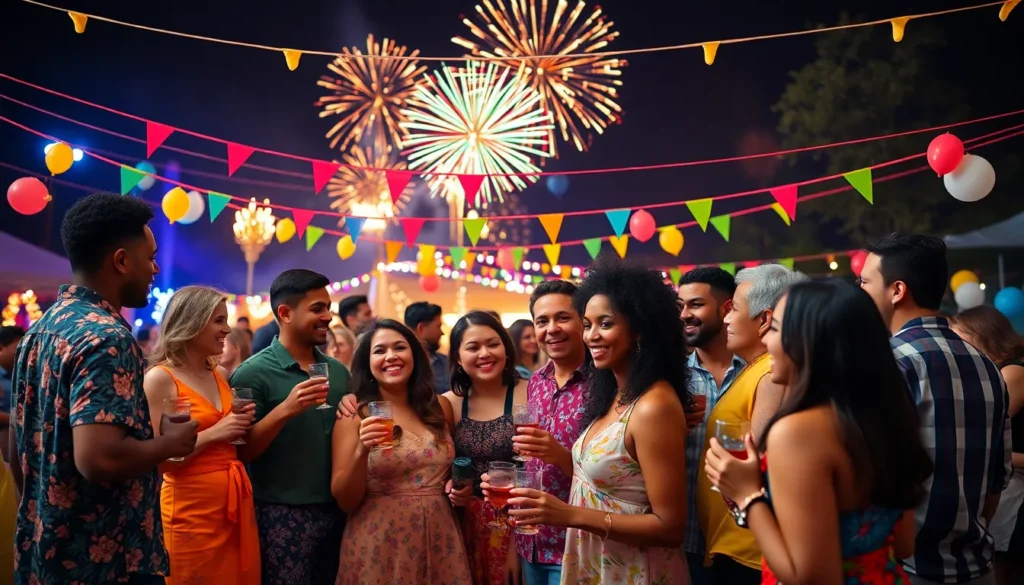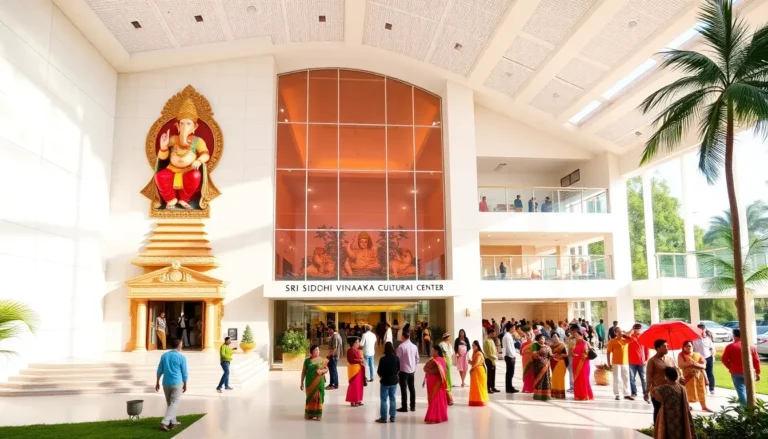Table of Contents
ToggleRituals are the quirky glue that holds societies together, blending tradition with a touch of the bizarre. From weddings that make you question the sanity of wearing white to New Year’s Eve countdowns that turn even the shyest into party animals, these practices reveal more than mere customs. They’re the unwritten rules of social interaction, helping people bond, celebrate, and sometimes just figure out how to avoid awkward silences.
But why do we engage in these often peculiar behaviors? It’s not just for the Instagram photos or the opportunity to wear that funny hat. Rituals carry deep social meanings, acting as a mirror reflecting our values, beliefs, and the delightful chaos of human connection. Dive into the fascinating world of rituals and discover what they say about us, our communities, and the universal need for a little bit of weirdness in our lives.
Overview of Rituals
Rituals represent essential components of cultural identity, shaping how communities connect. These structured activities often encompass symbolic gestures, words, or objects integral to shared experiences. Various societies across the globe practice rituals, highlighting their rich diversity.
Weddings exemplify communal practices, showcasing vows and traditions that unite couples while involving families and friends. These ceremonies often incorporate elements unique to specific cultures, such as music, dance, and attire. New Year’s Eve celebrations also serve as a significant ritual, with fireworks and countdowns marking transitions that nurture hope and renewal.
Religious ceremonies, including baptisms and funerals, demand reverence and respect, emphasizing beliefs about life cycles and spirituality. Participants engage with their faith, strengthening community bonds through shared beliefs and values. Rituals also manifest in secular contexts, such as holiday gatherings or team-building exercises, further illustrating their adaptability.
Common elements persist within rituals, such as repetition, rhythm, and structure. These features reinforce shared meanings, allowing individuals to experience a sense of belonging. Additionally, rituals can act as coping mechanisms, helping people navigate change and uncertainty, creating comfort amidst chaos.
Anthropologists often study rituals to understand cultural significance and social norms. Methods for examining these practices include participant observation and interviews, providing insights into how rituals enhance social cohesion. Such scholarly work emphasizes rituals’ roles as facilitators of communication and integration within communities, reflecting broader societal values and collective identity.
Through this lens, rituals become more than mere activities; they embody the essence of human connection, bridging the gap between tradition and modernity.
Types of Rituals

Rituals manifest in various forms within societies, serving distinct social purposes. Two predominant types include ceremonial rituals and daily rituals, each fulfilling unique roles in fostering community and individual connection.
Ceremonial Rituals
Ceremonial rituals often mark significant life events, including weddings, graduations, and religious observances. These events facilitate communal participation, reinforcing bonds among individuals. Wedding ceremonies unite families, while religious rites, like baptisms or funerals, deepen spiritual connections. Celebrations, such as New Year’s festivities, symbolize hope and renewal, gathering individuals to reflect on shared values. Each ritual typically follows a structured format, employing symbolic gestures to create a profound experience. Social cohesion strengthens through these collective ceremonies, embodying the essence of shared cultural identity.
Daily Rituals
Daily rituals consist of repetitive activities that provide structure and comfort. Examples include morning routines, family dinners, or specific ceremonies marking the start or end of the day. These practices can instill a sense of normalcy amid chaotic environments. Incorporating daily rituals fosters a feeling of belonging within families or communities, reinforcing interpersonal connections. The rhythmic nature of actions like saying grace before meals highlights shared values and nurtures social bonds. Moreover, daily rituals often serve as coping mechanisms, offering familiarity during challenging times, thereby enhancing mental well-being.
Historical Context of Rituals
Rituals have evolved through centuries, serving vital roles in various cultures. Ancient societies utilized rituals to forge community bonds and express collective values. These practices often revolved around agricultural cycles, marking transitions such as planting and harvest times. Significant events, like seasonal festivals, played crucial roles in maintaining social structures.
Archaeological evidence shows rituals connected to religious beliefs in ancient civilizations. Egyptians, for instance, performed rituals to honor deities and ensure prosperity. Similarly, Mesopotamian cultures celebrated agricultural gods through elaborate ceremonies, highlighting their reliance on nature’s cycles. These rituals informed daily life and reinforced the community’s shared identity.
In addition to religion, the emergence of structured societies fostered new ritual forms. The establishment of kingdoms led to the development of state-sponsored ceremonies. Monarchs often held public rituals to legitimize their rule, binding subjects to a shared narrative. Historical records illustrate how these acts reinforced authority and fostered loyalty among citizens.
During the Enlightenment, the perception of rituals shifted with the rise of individualism. Although rituals continued to exist, their meanings transitioned. This period witnessed a blending of traditional and secular rituals, illustrating how society adapts to changing values. Even in modern contexts, rituals maintain relevance, providing individuals with templates for navigating life transitions.
Rituals also reflect societal norms and structures, adapting to cultural changes. Technological advancements have influenced the nature of contemporary rituals. However, the core function remains; rituals continue to foster connection, commemorate life events, and serve as vehicles for expressing identity. Exploration into the historical context of rituals reveals their importance in shaping cultural heritage and social cohesion.
Rituals in Different Cultures
Rituals hold profound meanings across various cultures, reflecting shared beliefs and values. These practices often facilitate community bonding and personal identity.
Cultural Significance
Cultural rituals symbolize collective identity and unity. They reflect the values intrinsic to a society, often showcased during life events. Examples include weddings, which celebrate union and commitment, and religious ceremonies, reinforcing spiritual connection. Communities derive strength from participating in these shared experiences. Each ritual encapsulates expectations, traditions, and the essence of cultural heritage.
Variations and Adaptations
Variations of rituals include different practices adopted by diverse cultures. Cultural exchange often leads to adaptation, blending traditions into new forms. For instance, holiday celebrations can merge customs, creating unique observances specific to a region. The significance of rituals might shift, yet their core purpose remains unchanged. Adaptation fosters inclusiveness, allowing a community to grow while honoring its traditions. These evolving rituals illustrate how cultures navigate modernity while preserving essential values.
The Role of Rituals in Society
Rituals hold significant importance in society, fostering connections and shared meanings among individuals. They play a crucial role in social dynamics, enhancing interactions and creating bonds.
Social Cohesion
Social cohesion relies heavily on rituals. They provide structured opportunities for individuals to come together, reinforcing mutual understanding and support. Celebrations like weddings and festivals create a sense of belonging within communities. Shared experiences during these events cultivate stronger ties and deepen relationships. Research indicates that participation in rituals can improve interpersonal connections, enhancing overall community harmony. Regular interaction during rituals fosters familiarity, helping to bridge gaps between diverse groups. Ultimately, these practices contribute to a more united society.
Identity Formation
Rituals significantly influence identity formation. They serve as markers of cultural and personal identity, helping individuals connect with their heritage. Through participation, people express their values and beliefs, reinforcing their sense of self. Ceremonial events like graduations and rites of passage symbolize transitions in life, shaping personal narratives. In addition, rituals allow communities to maintain traditions, influencing how individuals perceive themselves within a group. Engaging in shared rituals helps people understand their collective identity, contributing to a stronger community bond. Overall, rituals enhance the understanding of one’s place within society.
Rituals play a vital role in shaping social dynamics and cultural identity. They foster connections among individuals and communities while reflecting shared values and beliefs. Through both ceremonial and daily practices, rituals offer comfort and structure in an ever-changing world.
As societies evolve, so do their rituals, adapting to modern contexts while preserving essential traditions. This adaptability highlights the enduring importance of rituals in enhancing social cohesion and promoting a sense of belonging. Ultimately, rituals remain a powerful expression of human connection, bridging the gap between past and present while enriching the tapestry of cultural heritage.







